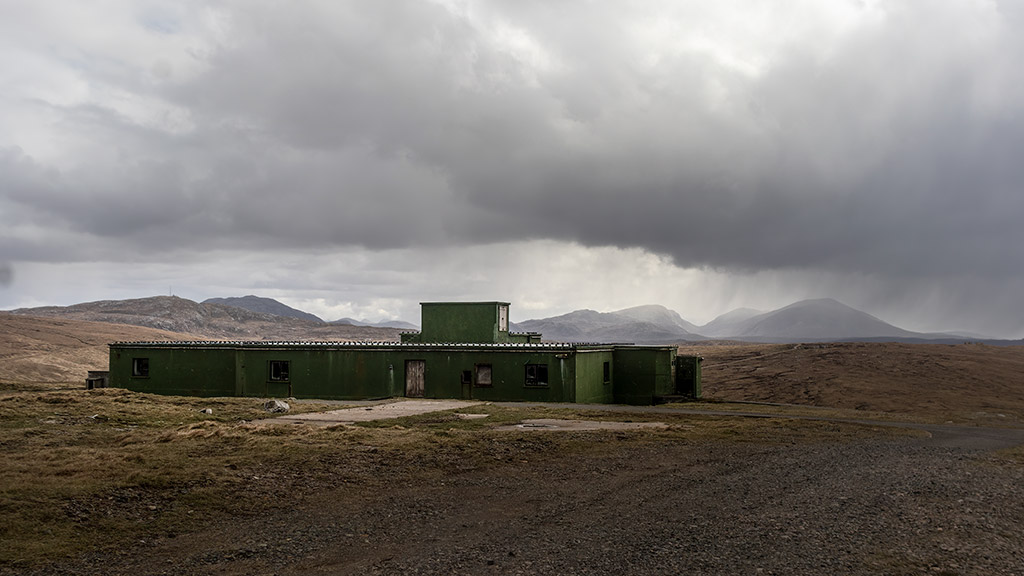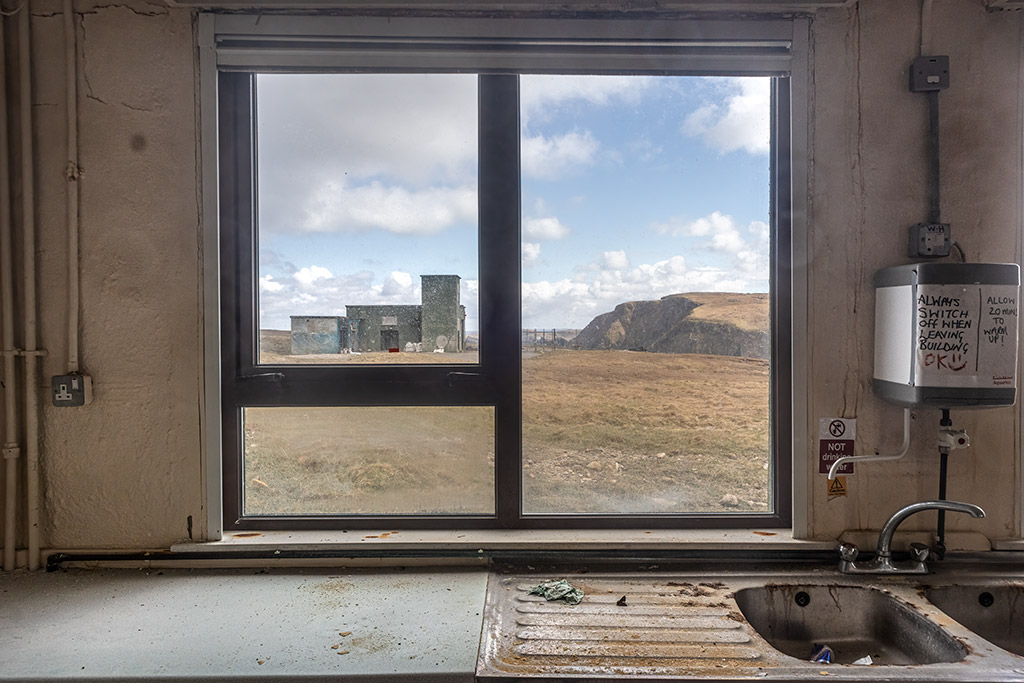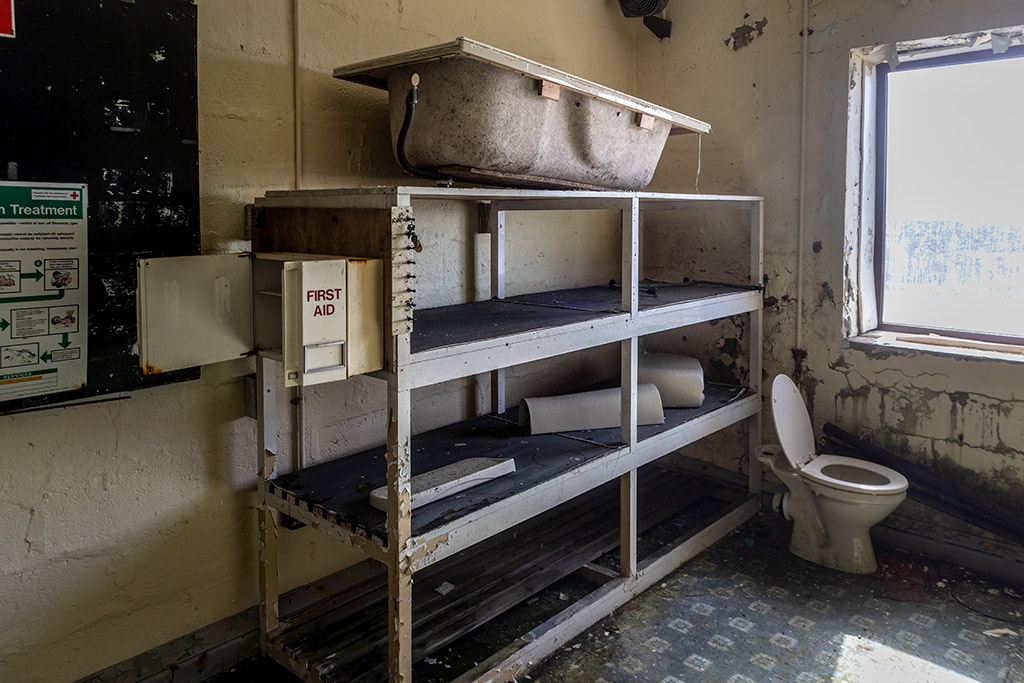Royal Air Force Aird Uig History and Facts

Earlier this year, during one of my many visits to the Outer Hebrides, I took time out to explore the spooky remains of an old RAF base on the Isle of Lewis. Nothing could have prepared me for what I found.
Whilst this sounds a little clickbaity, it isn’t. I really did discover something quite extraordinary. I decided not to release the video before today for a very good reason. I don’t want to spoil the surprise but it’s important to read the disclaimer in the video.
In this video, I discover something pretty amazing at a spooky abandoned RAF base. RAF Aird Uig, Scotland.
In case you enjoyed the video and want to find more info about the incredible place, I have condensed a full history of the old place. I have also compiled a few interesting facts too!

The history of RAF Air Uig
RAF Aird Uig, also known as Royal Air Force Aird Uig, was a significant military airfield located on the Isle of Lewis in the Outer Hebrides of Scotland. Throughout its history, it played a crucial role in various military operations, particularly during World War II. In this comprehensive history, we will explore the origins, development, and key events associated with RAF Aird Uig in more than 2000 words.
Origins and Construction (1939-1940):
The origins of RAF Aird Uig can be traced back to the late 1930s when it became apparent that the United Kingdom needed to strengthen its defences, especially in the remote and strategically important Scottish Highlands and Islands. These areas were vulnerable to potential enemy attacks and offered excellent bases for maritime and anti-submarine operations.
In 1939, as World War II loomed, the Royal Air Force identified the need for an airfield in the Outer Hebrides to support its coastal command operations and protect the sea lanes around the British Isles. Aird Uig was chosen as the site for this airfield due to its strategic location on the northwest coast of Lewis, commanding views of the North Atlantic and the waters surrounding the islands.
Construction began in earnest in 1940. The airfield was equipped with three intersecting runways, hangars, accommodation facilities for personnel, and various support buildings. Given the rugged and challenging terrain of the island, construction was no small feat and required a significant amount of labour and resources.
World War II (1940-1945):

RAF Aird Uig became operational in 1941 and was primarily tasked with anti-submarine warfare (ASW) and maritime patrol duties. It was home to several squadrons, including No. 120 Squadron equipped with Lockheed Hudson bombers, and No. 224 Squadron operating Lockheed Ventura aircraft. These squadrons played a vital role in protecting convoys, detecting and attacking German U-boats, and providing air cover for shipping in the North Atlantic.
One of the most notable incidents during this period was the sinking of the German U-boat U-463 by a Lockheed Hudson aircraft from RAF Aird Uig in February 1943. This success, along with numerous other patrols and attacks on enemy submarines, demonstrated the airfield’s effectiveness in safeguarding the vital sea routes.
In addition to ASW operations, RAF Aird Uig also served as a refuelling and maintenance point for aircraft travelling between North America and Europe. This further highlighted its strategic importance in the overall war effort.
The airfield also played a role in air-sea rescue operations, assisting downed airmen and sailors in distress in the challenging North Atlantic waters.
Post-World War II Era (1945-1957):
With the conclusion of World War II, the strategic significance of RAF Aird Uig diminished. However, the airfield continued to operate in the post-war period, primarily as a training and maintenance facility. It was used for a variety of purposes, including training exercises and as a base for air-sea rescue missions in the region.
During this time, the airfield saw a reduction in personnel and resources compared to its wartime peak. It operated with a reduced staff and a smaller number of aircraft.

Closure and Decommissioning (1957-1958):
The changing geopolitical landscape and advancements in military technology led to a reassessment of the role and necessity of many military installations, including RAF Aird Uig. In 1957, it was decided to close the airfield, and operations gradually wound down over the course of the year.
In 1958, RAF Aird Uig was officially decommissioned, and the site was handed back to civilian control. Many of the buildings and facilities were repurposed for civilian use, while some were abandoned or demolished. The runways and taxiways, which had been constructed with the robustness required for military aircraft, found new life as a foundation for the island’s growing civil aviation needs.
Civilian Use and Legacy (1958-Present):
Following its closure as a military airfield, RAF Aird Uig underwent a transformation into a civilian airfield known as Stornoway Airport (EGPO). It became a key transportation hub for the Isle of Lewis and the wider Outer Hebrides, providing essential air links to mainland Scotland.
Stornoway Airport has since undergone various expansions and improvements to accommodate modern aviation requirements. It serves as a vital lifeline for the island’s residents and plays a crucial role in supporting tourism, trade, and community connections.
In addition to its civilian role, the legacy of RAF Aird Uig is remembered through various historical markers and exhibits on the site, commemorating the airfield’s wartime contributions and its significance in the history of the Outer Hebrides.
Conclusion:
RAF Aird Uig, later known as Stornoway Airport, holds a unique place in the history of the Outer Hebrides and the United Kingdom’s military efforts during World War II. From its strategic location on the Isle of Lewis, it played a pivotal role in protecting vital sea routes, conducting anti-submarine warfare operations, and supporting air-sea rescue missions in the challenging North Atlantic.
While its military operations ceased in 1958, the airfield’s legacy lives on through its civilian use as Stornoway Airport. It continues to be an essential transportation hub for the region, connecting the people of the Outer Hebrides with the rest of the world and serving as a testament to the enduring importance of this remote and historic location.

20 Fun Facts of RAF Air Uig
RAF Aird Uig, later known as Stornoway Airport, has a rich history and several interesting facts associated with its military and civilian use. Here are 20 fascinating facts about this historic airfield:
- Strategic Location: RAF Aird Uig was strategically located on the Isle of Lewis in the Outer Hebrides, providing a crucial vantage point over the North Atlantic during World War II.
- Anti-Submarine Warfare: The primary mission of the airfield during World War II was anti-submarine warfare (ASW) to protect convoys from German U-boats.
- Sinking U-463: An aircraft from RAF Aird Uig was responsible for sinking the German U-boat U-463 in February 1943, showcasing the airfield’s effectiveness in ASW operations.
- Lockheed Hudsons: RAF Aird Uig was home to No. 120 Squadron, which operated Lockheed Hudson bombers, an aircraft known for its versatility in maritime patrols.
- Lockheed Venturas: No. 224 Squadron at RAF Aird Uig flew Lockheed Ventura aircraft, which were also used for ASW and maritime patrol duties.
- Air-Sea Rescue: The airfield played a crucial role in air-sea rescue operations, aiding downed airmen and sailors in the treacherous North Atlantic waters.
- Post-War Transition: After World War II, RAF Aird Uig transitioned into a training and maintenance facility, playing a role in air-sea rescue missions and training exercises.
- Closure in 1958: The airfield was officially closed in 1958, leading to its decommissioning and subsequent civilian use.
- Stornoway Airport: The airfield became Stornoway Airport (EGPO) after its closure, serving as a civilian aviation hub for the Isle of Lewis and the Outer Hebrides.
- Civilian Expansion: The airport underwent significant expansion and modernization to meet the growing demands of civilian air travel.
- Lifeline for the Isles: Stornoway Airport serves as a vital lifeline for the residents of the Outer Hebrides, connecting them with mainland Scotland and beyond.
- Runway Improvements: The runways and taxiways, originally constructed for military aircraft, have been continually upgraded to meet the requirements of modern civilian aviation.
- Military Heritage: Various historical markers and exhibits on the site commemorate the airfield’s military heritage and its role in World War II.
- Control Tower: The original control tower from the RAF era still stands at the airport, serving as a visible reminder of its military past.
- Tourism: Stornoway Airport supports the tourism industry in the Outer Hebrides, welcoming visitors to explore the unique culture and natural beauty of the islands.
- Cultural Significance: The airport has played a role in preserving and promoting the cultural heritage of the Outer Hebrides, which includes a rich Gaelic language and musical tradition.
- Historic Landings: Over the years, the airport has seen several historic landings, including visits by royal aircraft and special charter flights.
- Weather Challenges: The location of Stornoway Airport presents weather challenges, with frequent high winds and adverse conditions, making pilot skills and aircraft capabilities critical.
- Community Support: The airport has strong community support and is often used for local events and gatherings, demonstrating its importance beyond transportation.
- Wildlife Conservation: The surrounding area of RAF Aird Uig and Stornoway Airport is known for its natural beauty and wildlife, including seabirds, seals, and opportunities for nature enthusiasts
RAF Aird Uig’s transformation from a wartime military airfield to a thriving civilian airport reflects its enduring significance in the Outer Hebrides and its role in both military history and modern-day connectivity.





Frequently Asked Questions
Where is RAF Aird Uig?
Google Maps: CLICK
W3W: ///communal.bind.mows
► WORKSHOPS
► ABOUT ME
► MY GEAR
► FACEBOOK
► YOUTUBE
► INSTAGRAM
13/02/2025 Author Charles
Gary,
I felt I had to write, because I actually served at R.A.F. Aird Uig for five years, from October 1957 until August 1962.
With respect, your history is completely wrong. You have tried to put two and two together and got three. Stornoway is on the East side of the Isle of Lewis and Aird Uig is on the West side, on Gallan Head.
R.A.F. Aird Uig was never an airfield. It was a C.E.W Radar station.
Stornoway Airport has always been a civilian airport. However, in about 1962 or 63, an additional R.A.F. section was built there, to turn it into a N.A.T.O. base. This was disbanded at the end of the Cold War.
Meanwhile, on the other side of the island ,
R.A.F.Aird Uig continued under R.A.F. control . After the Radar equipnent had been removed and the domestic site abandoned, the technical site was used
for navigational purposes and still maintained by the R.A.F.
Later, individual buildings within the domestic site were sold off and turned into private dwellings.
Finally, within the past ten years or so, the community has acquired the Technical site from the M.O.D., so that people like you and I can enjoy à walk over the whole of the headland.
Regards,
Charles W.
ex. R.A.F Aird Uig
13/02/2025 Author Gary
Hi Charles,
Thank you for the update.
I’m guessing it must be quite sad to see it in such a state. But equally, it’s great to know it’s not required!
Take care
Gary
13/02/2025 Author Charles Watson
The accurate history of R A F. Aird Uig us on Wikipedia.